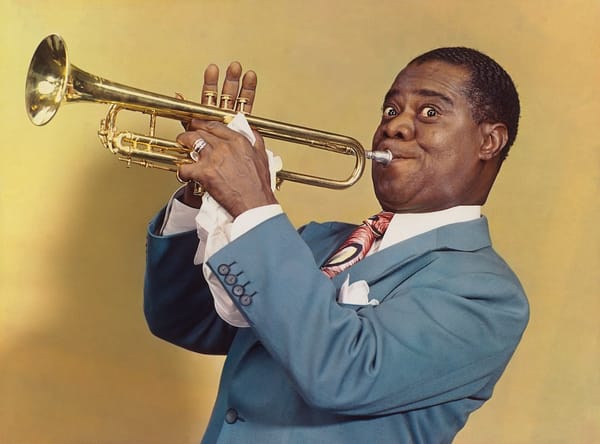How to Use Compression in Music Production
Compression controls the dynamic range of music and shapes tone, punch and clarity. This beginner friendly guide explains how compressors work, what each control does and how to apply compression effectively in real world mixing situations.

Compression is one of the most essential tools in music production, yet it is also one of the most misunderstood. Beginners often describe compressors as mysterious black boxes that magically make tracks sound better or worse. In reality, compression is simply a way to control dynamics. Dynamics refer to the difference between the loudest and softest parts of a sound. Once you understand the basic parameters, compressors become intuitive and creative tools that shape your mixes, add punch, tighten performances and bring everything together.
This article explains what compression does, how the key controls work and how to use compression in common real world scenarios.
What Is Compression?
Every recording, whether vocals, drums, guitars or keyboards, naturally varies in loudness. Some notes are stronger, some softer. Some syllables pop out while others disappear. Compression helps smooth these variations by reducing the level of loud peaks and lifting softer details. The result is a more controlled and present sound.
A compressor works by automatically reducing the volume of a signal when it rises above a certain threshold. After the signal is tamed, you can turn up the overall level again using makeup gain. This gives you a more consistent performance without losing musical expression.
A helpful way to imagine compression is to think of it as an invisible hand riding the volume fader in real time and adjusting levels faster and more precisely than any human can.
The Essential Compressor Controls
Compressors come in many forms such as hardware units, software plugins, vintage emulations and multiband processors, but their basic controls are always similar. Understanding these parameters is the key to using compression effectively.
1. Threshold
The threshold determines the level at which compression begins. If the signal stays below this level, the compressor does nothing. When the signal goes above it, the compressor reduces the volume.
How to use it:
- A lower threshold produces more compression. A higher threshold produces less.
- Start with a moderate threshold and adjust upward or downward to control how much of the sound is affected.
2. Ratio
The ratio determines how much the signal is reduced after it crosses the threshold.
For example:
- A 2 to 1 ratio means that if the input goes 2 decibels over the threshold, only 1 decibel will come out.
- Ratios between 4 to 1 and 6 to 1 produce moderate shaping.
- Ratios of 10 to 1 or higher approach limiting where peaks are heavily restricted.
Rule of thumb:
- Low ratios from 1.5 to 1 up to 3 to 1 are great for transparent control.
- Medium ratios shape the sound more obviously.
- High ratios are used for strong control or creative effects.
3. Attack
Attack time determines how quickly the compressor reacts after the signal crosses the threshold. A fast attack clamps down immediately and tames quick peaks. A slow attack allows the initial transient to pass and compresses what follows.
Why this matters:
- Drums sound more energetic when the attack is slightly slow because the transient remains sharp.
- Vocals benefit from faster attack if you want to smooth harshness or control plosive spikes.
- Bass can feel more forward with a slower attack or more rounded with a faster one.
4. Release
Release time determines how quickly the compressor stops reducing gain after the signal falls below the threshold. A fast release returns the sound to normal quickly. A slow release holds compression longer and smooths the sound.
Tip:
- If you hear unnatural pumping or breathing, your release time is too fast or too slow.
- Adjust until the compression feels smooth and natural.
5. Knee
The knee determines how gradually or suddenly compression is applied. A soft knee gives you a smoother onset of compression. A hard knee gives you more aggressive control. Beginners can use the default setting or choose soft knee for general use.
6. Makeup Gain
Compression reduces peaks, which often lowers the overall volume. Makeup gain lets you raise the signal back to the desired level.
Important:
Always compare the compressed and uncompressed sound at roughly the same volume. The human ear often prefers louder signals, which can mislead your judgment.
Why Use Compression?
Compression is more than just a volume fixer. It is a creative tool with many uses.
1. To smooth out performances
Vocals, guitars, bass lines and strings all benefit from dynamic consistency. Compression helps the listener hear every note clearly.
2. To add punch and energy
A slower attack combined with a faster release can enhance the natural hit of drums and make your mix more energetic.
3. To shape tone and character
Different compressors such as optical, VCA, FET or tube units add subtle coloration. Some compressors are valued for their musical behaviour even when used lightly.
4. To glue elements together
On buses such as drum bus or vocal bus and on master tracks, gentle compression creates cohesion.
5. To prevent clipping
Limiters, which are a form of compression, stop peaks from exceeding specified levels and avoid distortion.
Types of Compressors
Understanding compressor types helps you choose the right tool for the job.
1. VCA Compressors
Clean, precise and versatile. Useful for drums, guitars and buses.
2. FET Compressors
Fast, punchy and aggressive. The classic 1176 unit is a famous example. Great for vocals, drums and bass.
3. Optical Compressors
Smooth and musical with naturally slower response. Ideal for vocals, strings and mix bus glue.
4. Tube Compressors
Warm, rich and vintage sounding. Excellent when you want character along with dynamic control.
5. Digital Compressors
Modern plugins offer both precision and warmth. They can be transparent or coloured, depending on the design.
Practical Ways to Use Compression
Now that the basics are clear, here are practical examples.
1. Vocal Compression
Vocals are one of the most dynamic elements in a mix. Good compression keeps them consistent and present.
Starting point:
- Ratio between 3 to 1 and 4 to 1
- Medium attack
- Medium release
- Threshold adjusted to achieve about 3 to 6 decibels of gain reduction
- Soft knee
If the vocal still feels uneven, use a second compressor with gentle settings. Professionals often stack compressors rather than forcing one compressor to work too hard.
2. Bass Compression
Bass has large dynamic swings and usually needs strong control to stay steady.
Starting point:
- Ratio around 4 to 1
- Fast or medium fast attack to control plucky transients
- Medium release
For more punch, slow the attack slightly.
3. Drum Compression
Drums respond dramatically to compression, so choose settings based on the sound you want.
Punchy and lively drums:
- Medium slow attack
- Fast release
- Ratio around 4 to 1
This lets the transient come through and adds excitement.
Tight and controlled drums:
- Fast attack
- Medium release
- Ratio around 6 to 1
This smooths peaks and reduces harshness.
4. Acoustic Guitar
Acoustic guitars often sound uneven because of performance dynamics and microphone placement.
Starting point:
- Ratio between 2 to 1 and 3 to 1
- Medium attack and release
- Gentle gain reduction between 2 and 4 decibels
Keep it subtle to avoid squashing the natural feel.
5. Mix Bus Compression
Mix bus compression gives your entire mix cohesion and polish.
Gentle settings:
- Ratio between 1.5 to 1 and 2 to 1
- Slow attack
- Fast or medium release
- No more than 1 to 2 decibels of gain reduction
If you can clearly hear the compressor working, reduce the amount.
6. Parallel Compression
Parallel compression blends a heavily compressed signal with the original. This preserves the clarity of the transient while adding body and density.
Useful for drums, vocals, bass and sometimes full mixes.
Tips for Beginners
1. Trust your ears
Meters help, but compression is ultimately a listening exercise.
2. Avoid over compression
If your track feels flat or lifeless, you are probably using too much compression.
3. Compare before and after
Match levels when comparing to avoid being tricked by louder sounds.
4. Presets are starting points
They are helpful, but every recording is different. Always adjust.
5. Solo the track, then listen in context
Soloing helps you hear the compressor clearly, but context determines whether it works well.
6. Good recordings need less compression
Capture a great performance and you will spend less time fixing problems.





